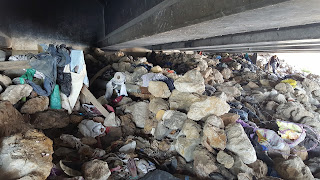This has really been a banner year for good books. Am I getting better at choosing? Are my tastes expanding? Probably yes.
To choose these books, I went through all my 2016 GoodReads reviews asking myself if I would re-read that book. I don’t re-read very often, but, in the unlikely event that authors stopped writing new books and I got caught up on all the books ever published and had literally nothing else to read, these are the books I would happily read again. These are also the books I try to push on friends and library patrons whenever possible. (Seriously. I sent a woman home with Ghost Summer just last week. I’ll consider it a personal affront if she doesn’t enjoy it.) They’re listed in alphabetical order by author; no ranking is implied. I read the books this year, but most of them were not published in 2016.
Aiken, Joan. 2016. The People in the Castle.
Aiken died in 2004 before I had ever even heard of her. Luckily for me, her daughter repackaged and republished some of her short stories as The People in the Castle, which got written up on some blog or website or other, and I had a chance to discover her unique, beautiful fairy tales. I’m looking forward to working through her immense bibliography.
Due, Tananarive. 2015. Ghost Summer.
Ghosts stories, people! GOOD ghost stories! And monster stories and human stories and human-monster stories. If you like your literature with a side of creepy, dive in.
Jackson, Shirley. 1962. We Have Always Lived in the Castle.
Shirley Jackson. That is all I have to say. Oh, except for: Thanks, Milton, for reminding me I had been meaning to read this.
Kingsolver, Barbara. 2009. The Lacuna.
Reading about Stalinist Russia and the American anti-Communist hysteria of the 1950s at this particular political moment was grounding. Recalling these eras in history has reminded me that nothing we are going through now is new; there have always been people who tried to enforce one particular way of being American. Pluralism is a luxury we are frequently not allowed to enjoy. And Kingsolver is always good.
Mandel, Emily St. John. 2014. Station Eleven.
I dig stories about how people cope with the end of “civilization.” This one is particularly good.
Yapa, Sunil. 2016. Your Heart Is a Muscle the Size of a Fist.
Tells the story of the 1999 WTO protests in Seattle from the perspective of the protestors, the officers, and a diplomat.
Honorable Mention
I particularly enjoyed these, but they’re not “re-readable.”
Bradbury, Ray. 1953. Fahrenheit 451.
Butler, Octavia. 1979. Kindred.
Hernandez, Carlos. 2016. The Assimilated Cuban’s Guide to Quantum Santeria.
Hugo, Victor. 1862. Les Miserables.
Nguyen, Viet Thanh. 2015. The Sympathizer.
West, Lindy. 2016. Shrill: Notes from a Loud Woman.